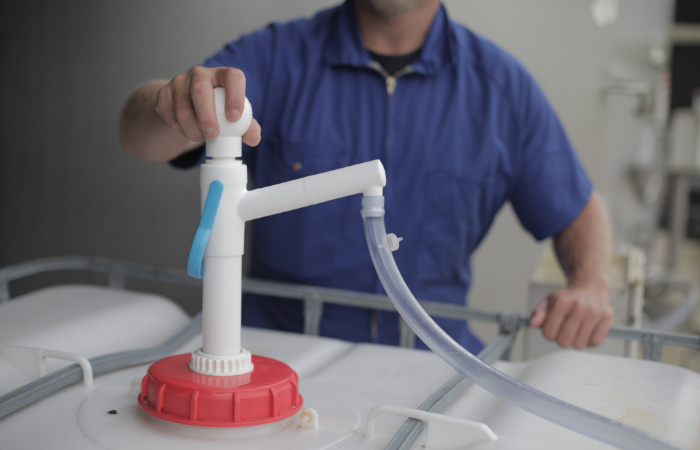RAISING DAIRY CALVES IN THE USA – OUR TOP TIPS
Healthy calves equal healthy profits. See our top tips for raising dairy calves in the USA, based on the experience of farmers using Eziaction barrel and drum pumps.

The smallest members of your herd require the most attention, but the investment in time and care is rewarded later when you have a high performing dairy herd that is healthy and profitable.
Before we get into our top tips for rearing calves, go back a step and consider genetics. Across the USA semen straws are available from sires with desired traits such as size, milk production, body condition score, as well as greater likelihood of producing females. Investing in semen from proven sires will help improve your herd productivity over time. If instead you want to be 100% sure you get heifer calves then buying them in is the option. Always check they have been transported with care and when they arrive check each animal is bright-eyed and energetic. Other good first checks include inspecting joints aren't swollen as this can be a sign of infection, and checking that the navel cord is clean and dry.
Now that you have your calves, here are some good tips for keep them safe, healthy and growing.
1 Organise your team and be sure they know their roles clearly. It's no good trying to teach someone on the job if you are risking losing a calf to illness or accident. Put systems and procedures in place, demonstrate what is required to new staff, and if needed provide buddies or mentors to show the way.
2 Support all decisions with data and systems. Whether you are using farm management software, an app, or an old-school spreadsheet, make sure all data is gathered from the moment the calf is born onwards. Details such as whether a calf needed an assisted birth or not can be important when assessing health or issues later on. Provide routines so gathering and recording important data becomes a habit that is never missed.
3 Create a warm, covered, ventilated environment for the new calves. A good rule of thumb is to allow six square feet for every calf and if you can keep them to under 12 animals per pen it is a good idea. An isolation pen should also be set up so as soon as any calf shows signs of illness it can be removed from the others.
4 Make sure new-born calves are covered for the first three weeks of their life as this is proven to reduce mortality. Smaller weaker looking calves, or those in cooler parts of the US might need calf coats or jackets to help keep dry and warm.
5 Start feeding calves colostrum immediately. True colostrum is incredibly powerful at quickly building up resistance and immunity to bugs, and in populating the gut with good bacteria. The digestive tract of a newborn calf actually allows antibodies to pass directly into the blood. In the first four hours of life you must get at least two quarts of true colostrum into a new calf, and then another two quarts during the next eight hours. Studies have shown calves that have good colostrum intake put on condition faster and have less risk of mortality.
6 Watch for signs of illness: sluggishness, limping, runny or very dry nose, swollen side, coughing or skin blotches, redness or scabs. Move sick calves into their own pen immediately. Give the sick calf electrolytes as soon as possible to stop them getting weaker.
7 Keep good feeding schedules and keep the same people feeding so they get to know each animal and will notice any issues. A good rule of thumb is to feed milk or a quality calf milk replacer at a rate of at least 10% of the body weight each day. If you are using a calf milk replacer don't overdose the mixture as this will not make the calf stronger but may actually make it sick and can cause scours.
8 Weigh calves to help with weaning. As noted earlier, accuracy is important in every aspect of calf rearing in order to keep them healthy and safe. A good way to wean calves off milk and onto more solids is by cutting back the water in the mix while keeping the same amount of powder.
9 Keep thorough cleaning practices from start to finish. Cleaning can be a pain and once the calves are a little bigger, there's a chance that your calving team might slacken off on some of the more mundane tasks. Don't let this happen as diseases can build up and infection break out. Use a quality hand pump for regularly spraying disinfectants when cleaning all surfaces and equipment from teats and gloves to ear-tags and trailers. Being able to thoroughly clean the pump and change seals if needed reduces the risk of issues with chemicals mixing, and cuts down the chances of contamination.
This quick list of nine tips for calf rearing in the USA will hopefully help you review your own systems and processes. When it comes to any cleaning and maintenance requirements around your farm, don't go past Ezi-action drumpumps for reliable pumping of all farm chemicals and cleaners, year after year after year.



